based on E.H. Nickel & M.C. Nichols (2009), H. Strunz & E.H. Nickel (2001),
revised by Thomas Witzke (2024)
4. OXIDES, HYDROXIDES
(Oxides, Hydroxides, V[5,6]-Vanadates, Arsenites, Antimonites, Bismutites, Sulfites, Selenites, Tellurites, Iodates)
4.K: Sulfites, Selenites, Tellurites (with Te4+), Tellurates (with Te6+)
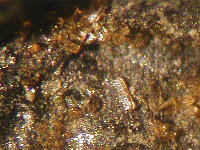 | 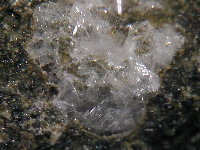 | 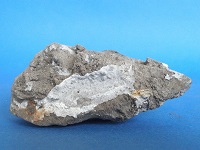 |
 |  |  |
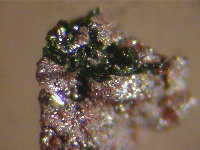 | 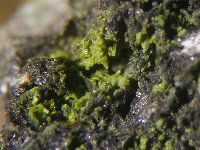 |  |
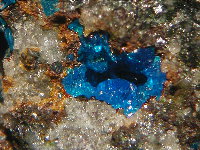 | 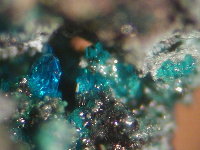 | 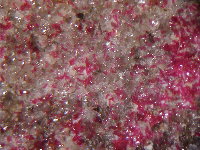 |
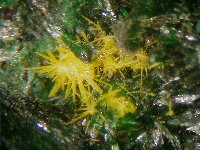 | 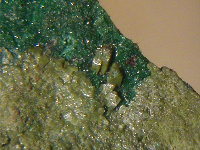 | 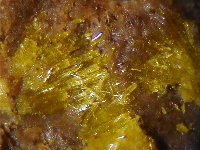 |
Plumbotellurite, originally described as orthorhombic, is identical with α-Pb2+Te4+O3, monoclinic (Missen et al., 2019). Complex framework of PbO4-6 polyhedra and TeO3 groups, with tunnels which act as micelles to contain the lone pair electrons (Christy et al., 2016).
Matthiasweilite is identical with γ-Pb2+Te4+O3.
With monomeric Te4+O3 and no larger structural unit. A defect fluorite superstructure (Christy et al., 2016).
With monomeric Te4+O3 as part of a larger structural unit that is a chain. (Hg2)2+ dimers and TeO3 groups form continuous chains -O-Te-O-Hg-Hg-O-Te-O- zigzagging in the (001) plane, with Te atoms at the apices of the bends (Christy et al., 2016).
With Cu2O6(H2O)6 dimers, decorated each with four TeO3 groups connecting adjacent dimers and defining (100) heteropolyhedral sheets (Rumsey et al., 2018).
With monomeric Te4+O3 as part of a larger structural unit that is a layer (Christy et al., 2016).
With monomeric Te4+O3 as part of a larger structural unit that is a layer. With Fe2Te2 'double triangles', these share FeO6 edges to form zigzag chains, which are cross-linked via a second type of TeX3 into layers parallel (001) (Christy et al., 2016).
Originally described as Pb2Fe6(Te4+O3)3(Te6+O6)(OH)10ˇ8H2O with mixed valencies Te4+ and Te6+. Redefined (IMA 18-A) as containing only Te4+ and sulfate. The crystal structure of eztlite contains mitridatite-like layers, with a repeating triangular nonameric [Fe3+9O36]45- arrangement formed by nine edge-sharing Fe3+O6 octahedra, decorated by four trigonal pyramidal Te4+O3 groups, compared with PO4 or AsO4 tetrahedra in mitridatite-type minerals. The interlayer contains Pb2+, sulphate tetrahedra and Cl- (Missen et al., 2018).
With monomeric Te4+O3 as part of a larger structural unit that is a framework. CuO3 squares share all corners with Te, and TeO3 groups share two corners with Cu, to form a framework with a large unit cell and chiral symmetry. The chloride anion is shared by three (Cu,Sb) atoms as a fifth ligand, while Pb is located in large interstices (Christy et al., 2016).
With monomeric Te4+O3 as part of a larger structural unit that is a framework. Edge-sharing pairs CuO5 square pyramids link corners to form zigzag chains, which are cross-linked into a rather open framework by TeO3 groups (Christy et al., 2016).
With monomeric Te4+O3 as part of a larger structural unit that is a framework. Face-sharing octahedra Fe2O9 share corners with pyramidal TeO3 groups. Rudolfhermannite is structurally related to the Zemannite group.
With monomeric Te4+O3 as part of a larger structural unit that is a framework. With large hexagonal channels parallel c hosting Mg and water, and zeolitic ion-exchange properties (Christy et al., 2016).
With monomeric Te4+O3 as part of a larger structural unit that is a framework. With dimers Fe2O8(H2O)2, connected through TeO3 pyramids, which define the walls of nearly-square channels, which accommodate the Te lone pairs. The structure shows some relation to Minium and Schafarzikite (Christy et al., 2016).
With monomeric Te4+O3 as part of a larger structural unit that is a framework. Complex framework of chains of alternating edge-sharing octahedral dimers Fe2O8(OH)2 and Fe2O4(OH)5(H2O), linked by TeO3 groups. The non-framework water molecule is loosely held in a structural cage between TeO3 groups (Christy et al., 2016).
Framework of monomeric TeO3 trigonal pyramids and Pb in 9-fold coordination, with channels along the c axis. The thiosulfate groups at the centers of the channels are only weakly bonded to the framework (Kampf et al., 2020).
Ozernovskite contains (TeO3) trigonal pyramids and (TeO4) square pyramids.
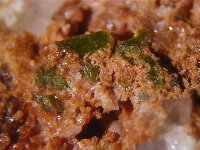 | 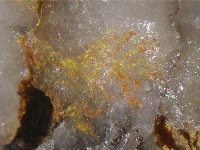 | 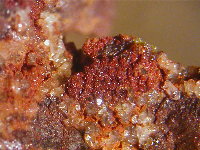 |
With dimers [Te4+2O6]4-, formed of corner-sharing TeO3 and TeO4 groups (Christy et al., 2016).
With clusters [Fe2O6(H2O)2(SO4)]8-, linked together in groups of four through Te2O6 dimers to make layers parallel (020), with the remaining H2O molecule in the interlayer (Christy et al., 2016).
The structure can be alternatively described as two weakly bonding Ca2+ cations, two carbonate groups and a neutral [Te2O4] residual complex that consists of a pair of edge-sharing TeO3 pyramids, or, as one oxygen atom of each carbonate triangle also links to a Te via a bond that is strong enough to fall within the bondvalence threshold, with edge-sharing dimers [Te4+2O6]4- as part of carbonatotellurite clusters [Te2C2O10]4- (Christy et al., 2016).
Fairbankite was originally described as PbTeO3. According to a re-investigation, the mineral has the composition Pb12(TeO3)11(SO4). The structure can be described as a 3D framework of Pb2+On polyhedra, Te4+On polyhedra, and SO4 tetrahedra. The stereoactive lone pairs of the Pb2+ and Te4+ cations are oriented into void space within the structure. Fairbankite contains two mixed sites statistically occupied by Te4+ and S6+. Six of the 10 fully occupied Te sites have Te4+ in trigonal-pyramidal environment (TeO3), while four have Te4+ at the center of highly distorted Te4+O3 disphenoids. The disphenoids allow for the creation of two dimeric (Te2O6)4- units of corner-sharing TeO3 and TeO4 groups, and of a trimeric, non-cyclic (Te3O9)6- unit of two disphenoids and a TeO3 group (Missen et al., 2021).
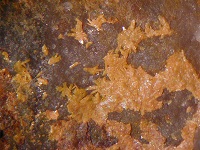 | 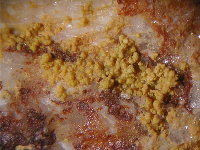 | 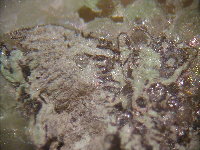 |
With zweier chains [Te2O5]n of alternating corner-sharing TeO3 and TeO4 groups (Christy et al., 2016).
With chains [Te2O6]n of corner-sharing TeO4 groups (Christy et al., 2016).
With zigzagging vierer chains [Te4O10]n of alternating corner-sharing TeO3 and TeO4 groups, BiO7-8 polyhedra and monomeric TeO3 groups (Christy et al., 2016).
With vierer chains [Te4O10]n of alternating corner- and edge-sharing TeO4 groups (Christy et al., 2016).
With sechser chains [Te6O16]n of pairs of edge-sharing TeO4 groups alternate with a TeO4 polyhedron that shares only corners with the two neigbouring pairs (Christy et al., 2016).
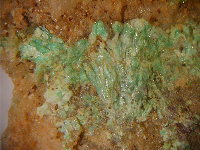 | 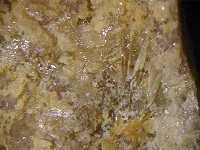 | 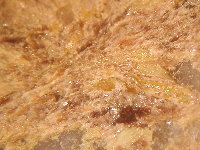 |
[Te4O10]n layers with 4- and 8-membered rings, similar to the 'apophyllite' type, but with alternating individual 'upward' and 'downward' pointing polyhedra (Christy et al., 2016).
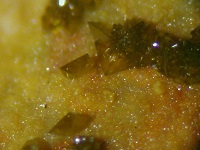 | 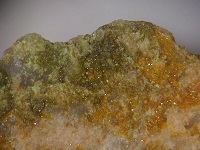 |  |
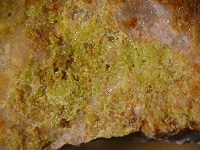 | 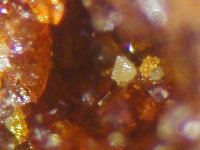 |  |
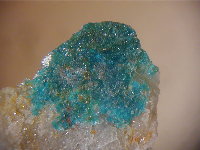 |  |  |
Originally described as Bi6Te4+2O13, new sum formula Bi6Te6+2O15. Pingguite contains Te6+, not Te4+. Network of BiO5 irregular square pyramids, with isolated TeO6 octahedra (Nénert et al., 2020, Physics and Chemistry of Minerals 47).
Monomeric Te6+X6 as part of a larger structural unit that is an infinite chain. With zig-zag chains built by alternating edge-sharing TeO4(OH)2 and CuO4(H2O)2 octahedra (Christy et al., 2016).
Monomeric Te6+X6 as part of a larger structural unit that is an infinite layer (Christy et al., 2016). With edge-sharing [Te6+O4(OH)2]- and [CuO4(OH)2]-octahedra.
Stair-step-like layers built of TeO6 and CuO6 octahedra.
Stair-step-like layers built of TeO6 and CuO6 octahedra.
Stair-step-like double-layers built of TeO6 and CuO6 octahedra.
Khinite polytypes: Khinite-4O (orth., Fddd), Khinite-3T (trig., P32, originally described as parakhinite, IMA 1978-036, redefined 2009 as a polytype of khinite)
Mojaveite is closely related to Bluebellite, Cu6(I5+O3(OH)3)(OH)7Cl, the structures are based on stackings of brucite-like Cu6MX14 layers, with M = (I or Te) and X = (O, OH and Cl)
Edge-sharing sheets of CuO5Cl and TeO6 octahedra. The sheets are closely related to the layers in spangolite, but are linked together in fuettererite to form double sheets, alternating with thick double layers of PbO2Cl6 polyhedra.
Monomeric Te6+X6 as part of a larger structural unit that is framework (Christy et al., 2016).
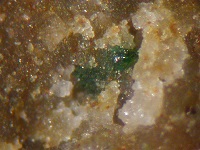 | 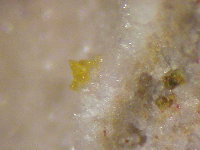 | 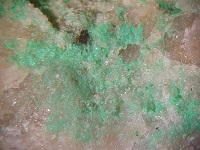 |
With edge-sharing tellurate octahedra, forming dimers (Te6+2O10)8-.
 |  |  |
With chains of corner-sharing TeO6-octahedra.
With chains of corner-sharing TeO6-octahedra.
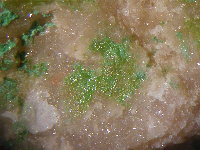 |  |  |
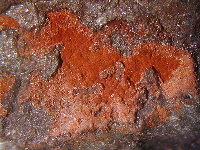 | 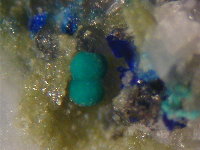 | 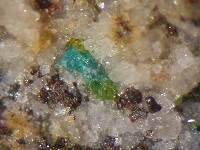 |
G = Grandfathered minerals: original description preceded the establishment of the CNMNC in 1959, and generally regarded as a valid species
A or IMA No. = Minerals approved by the CNMNC
Rd = Redefinition of the mineral approved by the CNMNC
Rn = Renamed with approval by the CNMNC
Q = Questionable mineral
Classification principles:
Subdivision of the Oxides etc. subclass "4.K: Sulfites, Selenites, Tellurites (with Te4+), Tellurates (with Te6+)" completely re-arranged compared to Strunz 9, especially Tellurites and Tellurates. New arrangement of Tellurites and Tellurates according to Christy et al. (2016) A review of the structural architecture of tellurium oxycompounds, Mineralogical Magazine 80, 415-545. Criteria are the valence state of Te (Te4+ or Te6+) and polymerization state of TemOn complexes. Subdivision into 4.KA. Sulfites; 4.KB. Selenites without Additional Anions, without H2O; 4.KC. Selenites with Additional Anions, without H2O; 4.KD. Selenites without Additional Anions, with H2O; 4.KE. Selenites with Additional Anions, with H2O; 4.KF. Neso-Tellurites with (Te4+On); 4.KG. Soro-Tellurites, with (Te4+2O6) dimers or other groups; 4.KH. Ino-Tellurites; 4.KJ. Phyllo-Tellurites; 4.KK. Tecto-Tellurites; 4.KL. Tellurites, not classified, unknown structures; 4.KM. Neso-Tellurates, monomeric (Te6+X6) octahedra; 4.KN. Soro-Tellurates, finite polymers (Te6+mXn); 4.KO. Ino-Tellurates, infinite polymers (Te6+mXn); 4.KP. With mixed valencies, Te4+ and Te6+; 4.KQ. Unclassified tellurates, unknown structures
Further classification:
|
4.KA. Sulfites.: Sulfites without additional anions, without water; Sulfites without
additional anions, with water; Sulfites with additional anions, with water. 4.KB. Selenites without Additional Anions, without H2O.: With medium-sized cations; with large cations. 4.KC. Selenites with Additional Anions, without H2O.: With medium-sized cations; with medium-sized and large cations; with large cations; with uranyl groups. 4.KD. Selenites without Additional Anions, with H2O.: With medium-sized cations; with large cations. 4.KE. Selenites with Additional Anions, with H2O.: With large cations; Ca-, Ba-, Pb-uranyl selenites; uranyl selenites with silicate. 4.KF. Neso-Tellurites with (Te4+On).: With isolated monomeric TeO3 groups; with monomeric Te4+O3 as part of a larger structural unit that is a chain; with monomeric Te4+O3 as part of a larger structural unit that is a layer; with monomeric Te4+O3 as part of a larger structural unit that is a framework. 4.KG. Soro-Tellurites, with (Te4+2O6) dimers or other groups.: With dimers (Te4+2O6); with trimers (Te4+3O9). 4.KH. Ino-Tellurites.: With zweier chains [Te2O5]n; with vierer chains [Te4O10]n; with sechser chains [Te6O16]n. 4.KJ. Phyllo-Tellurites.: Only one mineral. 4.KK. Tecto-Tellurites.: With Te4+3O7 framework; with Te4+3O8 framework. 4.KL. Tellurites, not classified, unknown structures.: ... 4.KM. Neso-Tellurates, monomeric (Te6+X6) octahedra.: With isolated monomeric Te6+O6; with monomeric Te6+X6 as part of a larger structural unit that is an infinite chain; monomeric Te6+X6 as part of a larger structural unit that is a layer; monomeric Te6+X6 as part of a larger structural unit that is framework chain. 4.KN. Soro-Tellurates, finite polymers (Te6+mXn).: With dimers (Te6+2O10)8-. 4.KO. Ino-Tellurates, infinite polymers (Te6+mXn).: Only two minerals. 4.KP. With mixed valencies, Te4+ and Te6+.: Only two minerals. 4.KQ. Unclassified tellurates, unknown structures.: Only two minerals. |
To distinguish from classical Strunz numbering, on hierarchical "group" level, a numbering with 3 digits is used, like "4.KA.005. Scotlandite", instead of 2 digits (like "4.KA.05.") in the Strunz system.
© Thomas Witzke (2024)
